You can contact us by e-mail or phone
from uk
01405 862917
outside uk
+44 1405 862917
01405 862917
+44 1405 862917
Nepal Trekking Lodges
Tea House Trekking
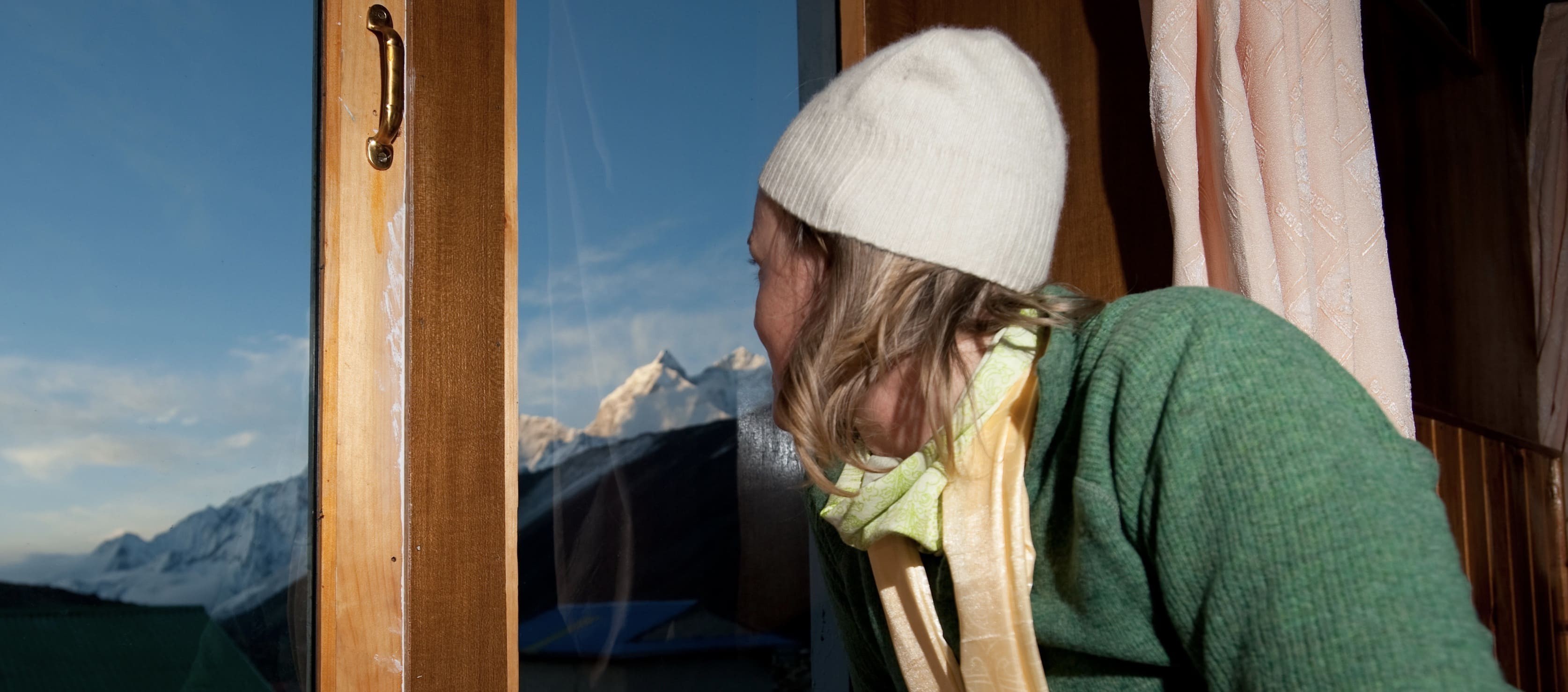
Nepal Trekking Lodges
Tea House Trekking
What are teahouses like? What about food?
Many of our treks feature accommodation in trekking lodges—historically called teahouses in Nepal. About 85% of people who go trekking in Nepal undertake a teahouse trek.
What are they like? Well, as they are usually independent, family-owned affairs, they can and do vary in standard. However, they are usually very small, simple, and basic. If you’ve never been teahouse trekking in Nepal before or even “hut to hut” trekking in the European Alps, the trekking lodge/teahouse lifestyle may well be new to you (see the bottom of this page for alternatives). But if you’ve some notion of hotel standard accommodation, this is a “get real” moment. We’re talking the Himalayas here, and the accommodations are often many, many days from the nearest road. They are remote and often isolated—absolutely everything is carried in and carried out, or locally “what’s available” sourcing.
By default, our descriptions below of teahouses are generic; there are so many of them nowadays.
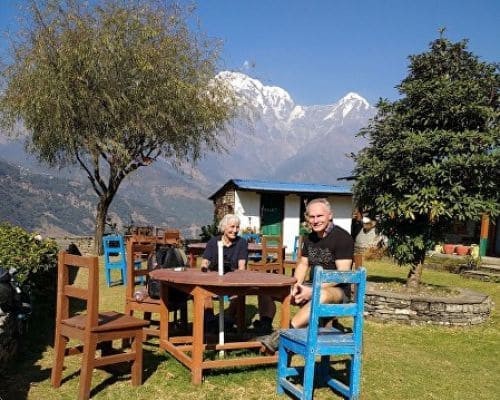
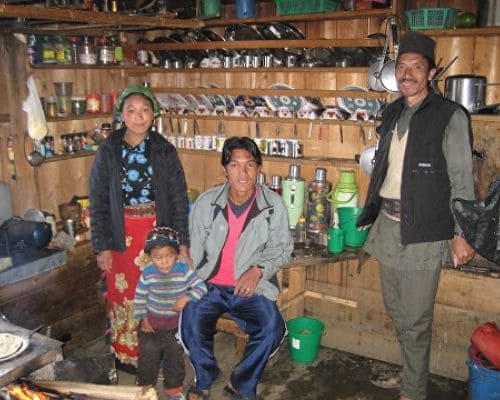
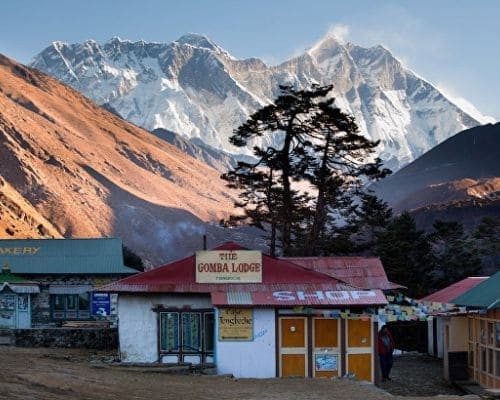
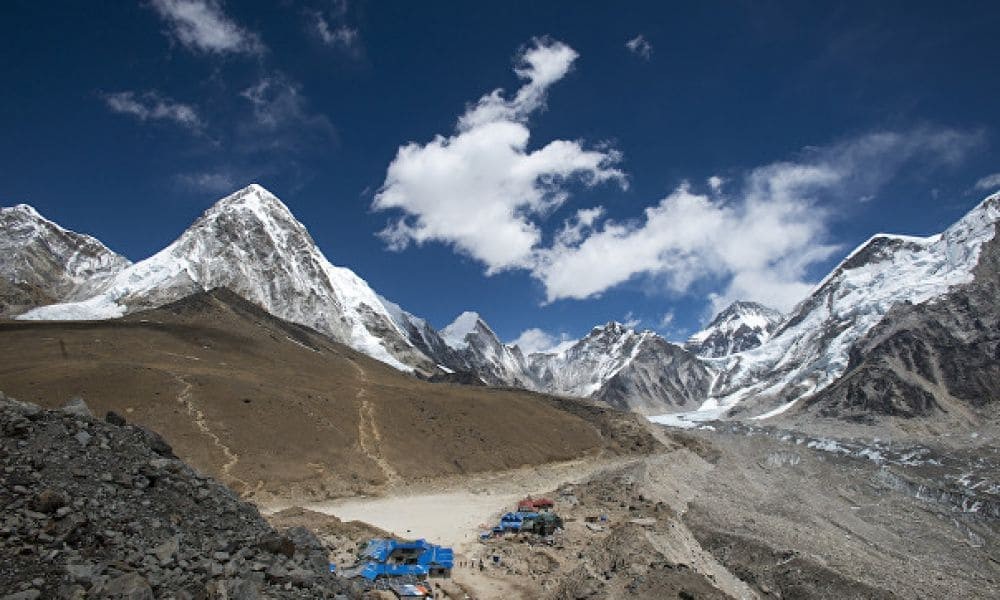
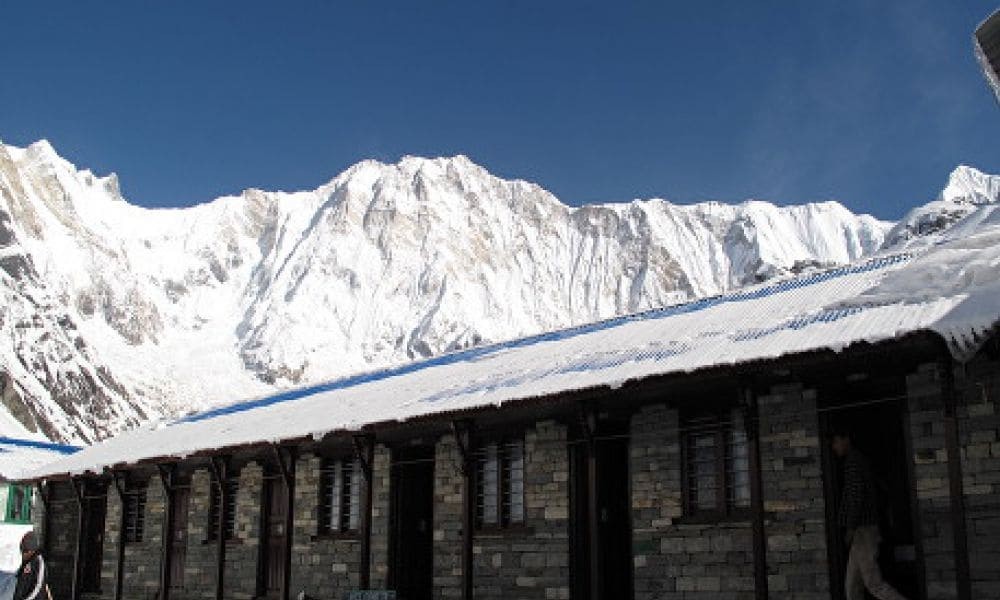
Meals on Trek
Usually, we include all your meals on the trek. It saves you having to carry lots of money with you on a trek as well as finding that you’ve run out of money part way through the trek. There’s little chance of finding an ATM in the Himalayas! Contrary to the old and persistent “trek rumours,” there is no such thing as a dirt cheap meal in the Himalayas, particularly in the main trekking regions. But you certainly won’t go hungry on the trek, that’s for sure, and although meals provided by the teahouses will vary, they are invariably plentiful in quantity. Meals in teahouses are usually taken in a communal dining area, rather like in most Alpine Huts. What’s “on the menu” can depend upon factors like what is available locally, how remote the teahouse is, and even how busy the teahouse is. With limited cooking facilities, a busy teahouse may provide a set menu in order to be able to feed everyone adequately. So, what we list below should not be considered definitive. These are “typical” dishes that could be considered generally available. Meat dishes (usually chicken) may also be provided, as well as other more locally sourced specialities.
DO NOT EXPECT TEAHOUSES TO BE ABLE TO PROVIDE SPECIAL DIETARY REQUIREMENTS BEYOND VEGETARIAN

Breakfast
A typical breakfast will consist of porridge, pancakes, toast, muesli and other cereals, eggs (various ways), tibetan style bread, tsampa, etc. Tea and coffee would be included.
Lunch
Sometimes lunch will be at a teahouse; other times it will be a picnic
Dal Bhat (the traditional Nepalese dish—a lentil curry and very filling), fried noodles, noodle soup, rice (often fried), momo’s (Tibetan dumplings), chapatis with a curry sauce, or even sandwiches! Tea, coffee, or other refreshments would not be included
Dinner
First Course: Soup (home-made vegetable or noodles-based)
Main Course
Dal Bhat, various noodles dishes, various rice-based dishes, momo’s, chapati, spring rolls, stews, spaghetti, pizza, dhido (mashed potato made with millet or buckwheat), potato and buckwheat pancakes, and other potato-based dishes, e.g., chips!
Puddings, tea, coffee, or other refreshments would not be included.
Whilst your meals as indicated above are included, refreshments and snacks aren’t. So, you need to budget accordingly.
But, beware…..the further and higher you go on trek, the more expensive some of these items become. This is because getting supplies to and from the more remote teahouses costs more…..then there’s the rubbish etc that needs to be taken out too.
Generally speaking prices will be around.
-
1 x litre mineral water$US 1-4
-
Beer 330ml$US 3-6
-
Soft drinks e.g. Cola 500ml$US 3-5
-
Tea/Coffee$US 1-2
-
Snacks/Crisps/Chocolate bars etc$US 2-4
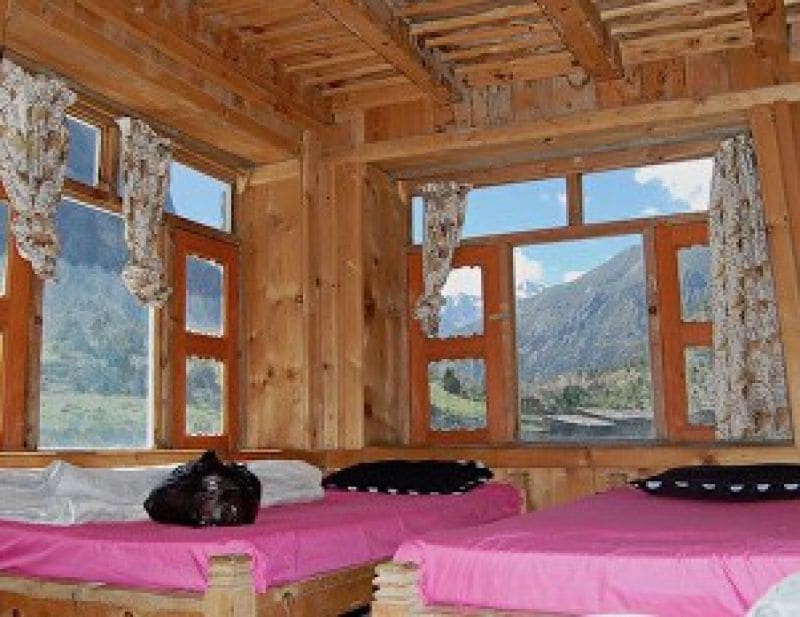
Bedrooms
In a word, simple,” and the general rule is that the further you are from an air or road access point, the more basic they become by default.
Ask yourself, just how are these places built in such isolated and often high-altitude locations?
Considering their “non-vehicle access” locations, it’s amazing they exist and function at all.
So don’t have high expectations. Rudimentary and functional are what a teahouse is all about. A place to eat and sleep with the basic “creature comfort” necessities.
Bedrooms may be just two basic wooden beds with very thin mattresses in a rather compact space. Not much more than that, really. So sleeping bags are essential. It’s likely that your “room” will have no electricity and certainly no heating. A simple place to sleep with some privacy. For extra comfort think about bringing a camping mat/thermarest- a personal choice.
Walls might be “paper thin”, so take ear plugs in case you’re in the next room to a loud snorer!
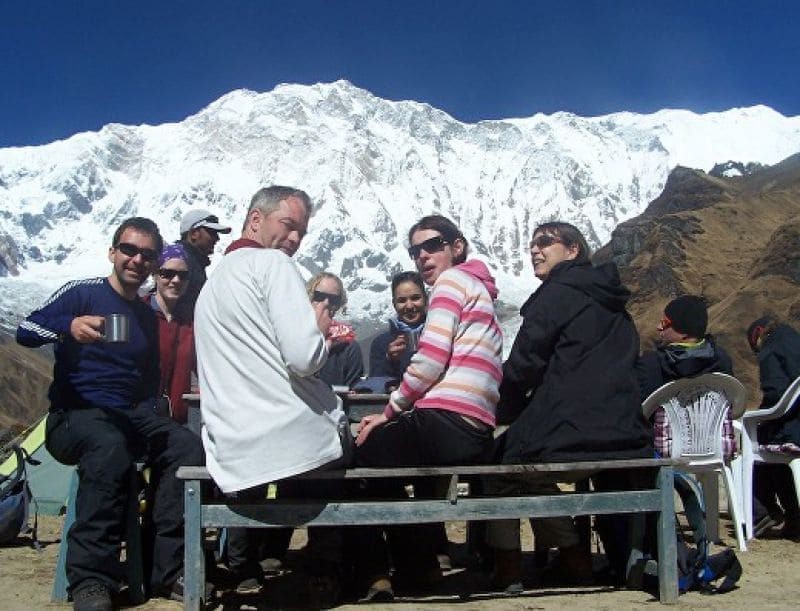
Facilities
We can only generalise here, as some teahouses that are close to access points do sometimes have “additions” like a private western-style toilet, electricity, and maybe even a shower! But, like we said previously, the further and higher you go, by default, the more basic teahouses usually become. A flushing toilet at 5000m will likely freeze, for example.
Generally, the teahouses will provide some communal washing facilities. Some will be nothing more than a shared wash basin. But many will have some form of shower facility. Usually this will be at an extra cost (say, $1–2 paid to the teahouse owner), and hot water may be limited in supply, so you might need to “book a shower”.
Toilets will again be communal, and many now have western-style flushing toilets. You will need to bring your own toilet roll (or buy it from the teahouse). But, in the really high altitude and remote teahouses, the toilets may be external “earth” types (water freezes) or “Turkish style” toilets.
Teahouse Etiquette
Pretty similar to that you will have experienced if you go “hut to hut” trekking in the European Alps, i.e., you respect the teahouse and the other people staying there, but with the odd cultural addition.
Certainly, you shouldn’t cause a noise disturbance to others, either communally or in your own rooms. Your walls may be very thin, and your neighbours can quite possibly hear everything too!
Clomping around in your hiking boots isn’t welcome either. Change into lightweight footwear, e.g trainers, sandals, crocs, etc
Haggling is an absolute “no” at a teahouse and will cause great offence and unpleasantness in return….Do not haggle!
Do not enter the kitchen unless invited to do so.
Respect the personal space and privacy of the teahouse owners…..the teahouse may also serve as their home too. Particularly, they may have a place to go and pray, and it really is offensive to intrude into their privacy.
Don’t smoke inside your room or in the communal areas. Even worse (and some people do so sneakily), do not use a cooking stove in your room. These are all really dangerous fire hazards. Usually anyone breaching the general and common sense safety of others will be asked to leave.
Electricity
Most teahouses will have some electricity. In remote areas of the Himalayas, they will not. But supply is always limited. Often, teahouses may be reliant upon a local source of power, e.g., hydroelectric, and many also have their own power generators. But usually there’s only enough electricity to power a few light bulbs. So, if you need to recharge batteries, expect to pay extra locally for this. As to what adaptor plug you will need to use in Nepal to recharge camera batteries and mobiles, well, we've got just about every variation there is. So, we'd suggest you take an adaptor that covers the whole range of plug variations, although the most commonly found are either two or three round prongs (not the flat prongs as in the USA). Indeed, make the most of any recharging opportunity when you are in tourist hotels in the likes of Kathmandu and Pokhara. The supply of electricity cannot be taken for granted or relied upon anywhere. When it's working, the supply is 220V and 50 Hz. If your electronic devices are 110 volts and 60 Hz, you'll need a voltage converter.
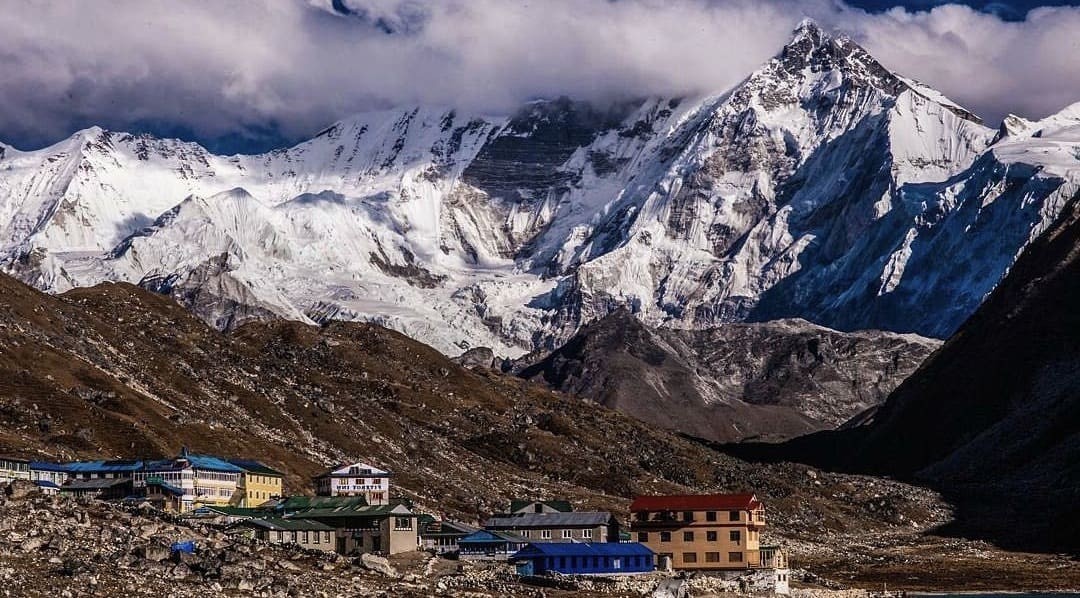
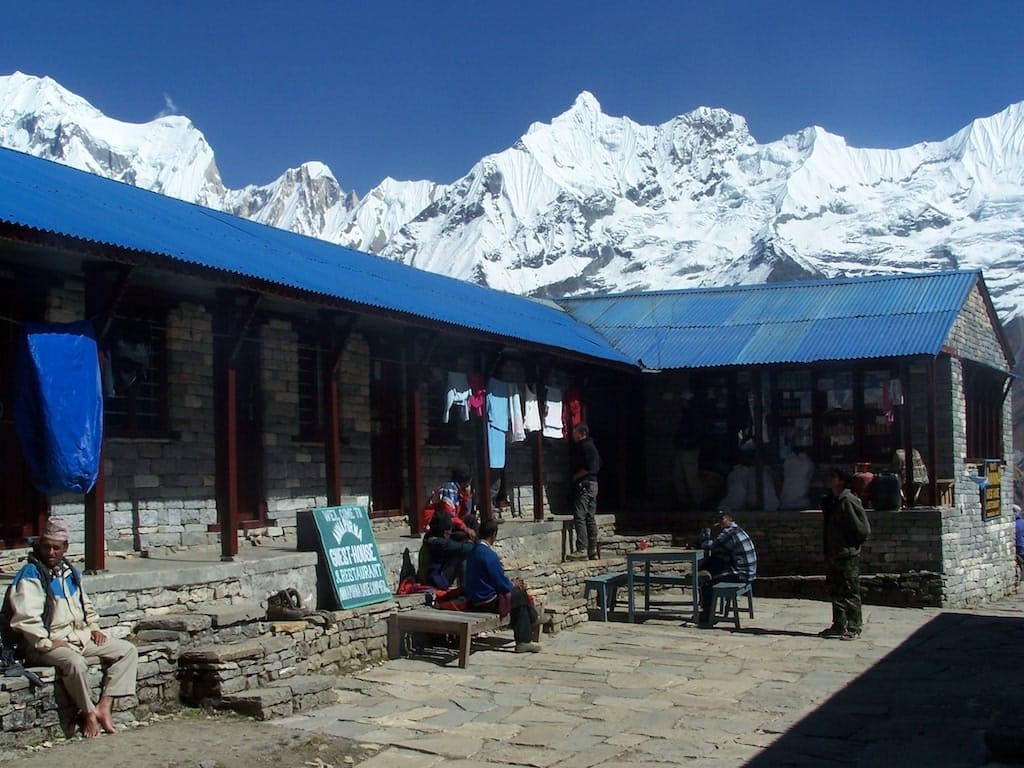
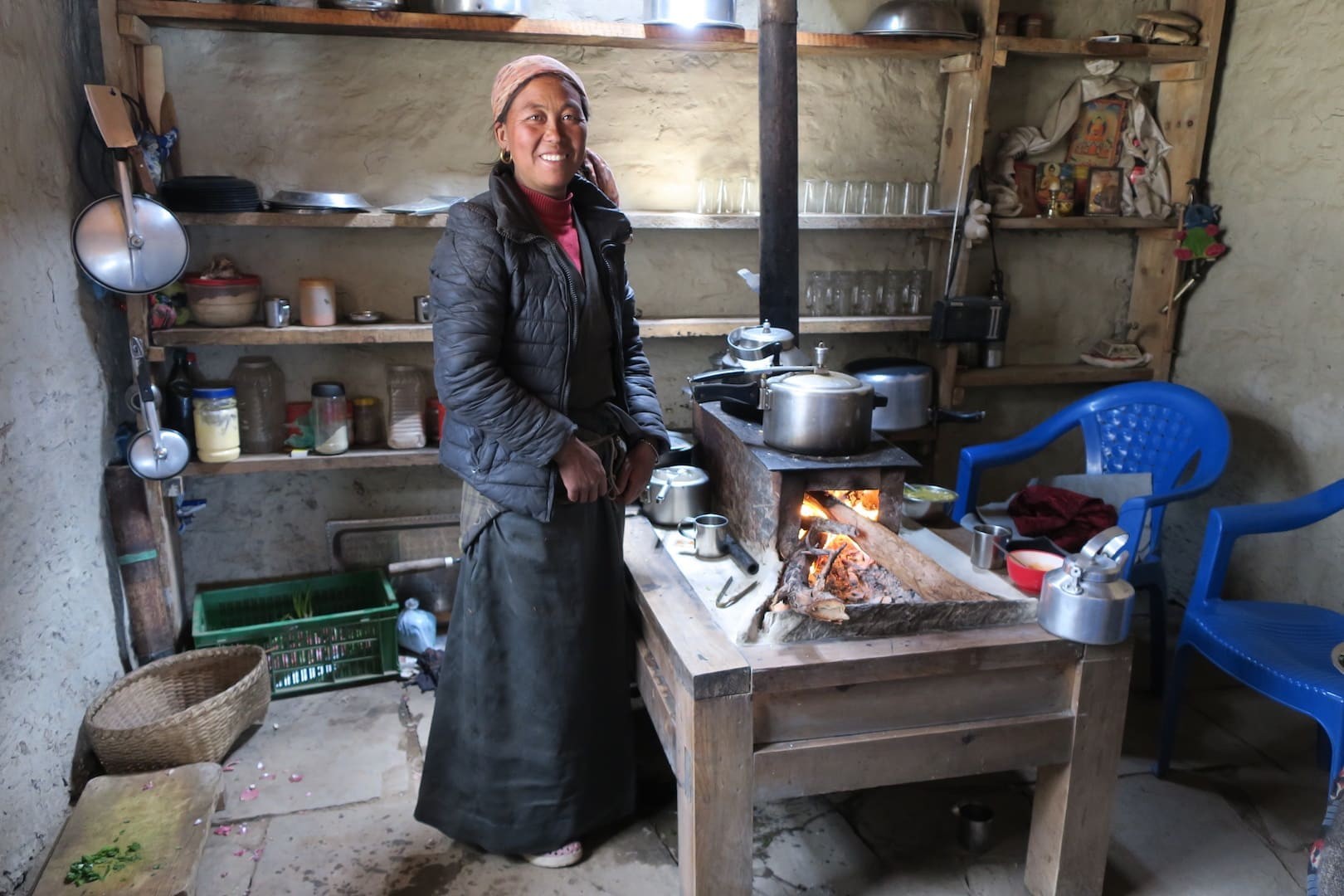
What are the alternatives to trekking lodges/tea houses?

If tea houses in Nepal are just too basic for you, then your trekking options become very, very limited.
However, there are a small number of higher-standard “Luxury Lodges” in the Everest and Annapurna regions. But they come at a premium price too!
You could, of course, choose fully supported camping instead. In fact, on many more remote, high-altitude, or “off the beaten track” treks, it’s the only option anyway. But camping is actually more expensive, as you need a large support crew.
See our WHAT’S IT LIKE ON A CAMPING TREK IN THE NEPAL HIMALAYA? article for more.
Or you just might have to accept that trekking in the Nepal Himalayas isn’t for you.
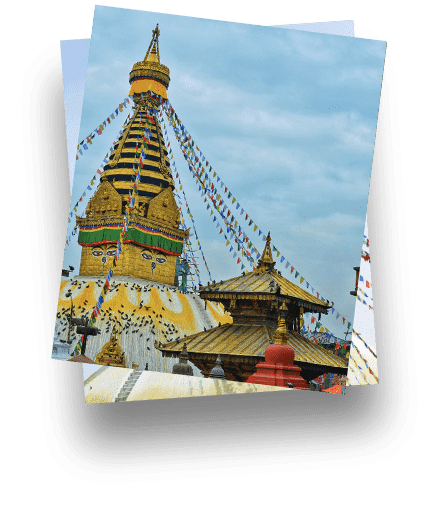
Read our Nepal Travel Guide

All rights reserved. Snow Cat Travel is a Registered Trade Mark UK 00003289264
